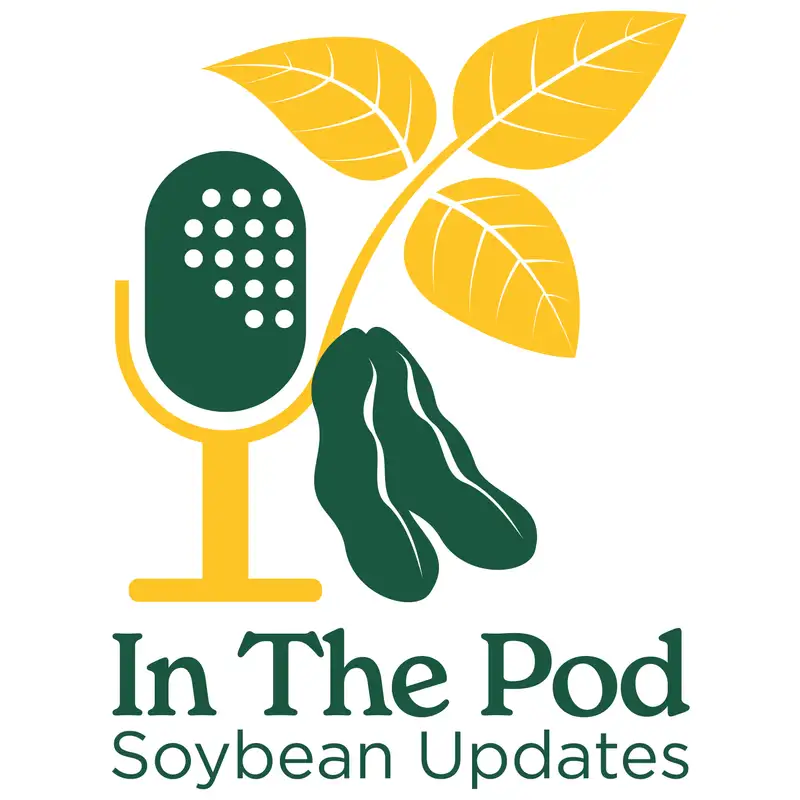11/13/25 Bringing the Herd Back Home: Integrating Crops & Livestock
You're listening to in the pod, soybean updates, a weekly trek into the latest soybean information from NDSU Extension. Producers generally keep the livestock far from trampling the cash crop, but bringing them together is an old idea made new. What are the benefits and takeaways from an integrated crop livestock system? Here to explain is Miranda Meehan, NDSU Extension livestock environmental stewardship specialist. Miranda, what exactly is an integrated crop livestock system?
Miranda Meehan:An integrated crop livestock system is really exactly what it sounds like. It's bringing livestock back into our cropping systems. Historically, our agricultural systems, crops and livestock, were very integrated. And as agriculture expanded, we separated those, and this is bringing those two pieces back together again.
Bruce Sundeen:Let's talk about some of the benefits. How does this interact with the soil?
Miranda Meehan:There's definitely some soil health benefits. When we're bringing in our livestock, they're either grazing a crop residue or they're grazing some type of cover crop. Well, that cover crop helps provide cover, reducing soil erosion, but also it has the potential to improve nutrients. We haven't seen that in our research yet, just because it takes a long time in our environment. We have seen some improvements in aggregate stability of those soils, which enhances water holding capacity and soil organic matter. And another really positive that a lot of people are concerned about is we have not seen any increases in soil bulk density or soil compaction. That's a concern when we bring livestock back in. And we haven't seen that in any of our research projects. We have up to four years on multiple projects and not seen any soil compaction.
Bruce Sundeen:Well, what about weeds? Is there any benefit to weed control?
Miranda Meehan:Yeah. So right now, we're working on a project. It's a corn soybean rotation where we're using winter cereals and we're grazing them in the fall if we have enough growth and then again in the spring. And that project, our winter rye, we found great suppression of our weeds compared to not having that cover crop, which not surprising for many of our listeners, but also that when we graze it, it doesn't impact that control or that weed suppression. So grazing that cover crop in the spring doesn't impact the ability to provide that weed suppression.
Bruce Sundeen:What sort of yields can be expected?
Miranda Meehan:We have not seen any benefits to yields, but we haven't seen any negatives. There's been no differences if we have that cover crop, if we graze that cover crop or not. I think part of that's timing and just different factors that influence crop production. Hopefully, as we see those longer term benefits to soil health, we'll see some of those boosts in yields in the long term.
Bruce Sundeen:Alright. Here's the big question, Miranda. What about the economics?
Miranda Meehan:Yeah. That is the most exciting part to me. You know, winter feeding costs on the livestock end are one of our most expensive pieces of our livestock system. So expanding grazing is always a win for them. But also, there's really no mechanism for getting a return on that investment in a cover crop. As a farmer that's using cover crops, if we bring livestock in, we can either get an economic return. We've seen up to $36 per acre return, or we're at least cutting that cost in that investment in that cover crop in half. And so we're getting some type of return by using that for livestock forage.
Bruce Sundeen:So if soil health improves and you're not spending as much money on weed control, this could be a real positive direction.
Miranda Meehan:Yeah. And so our economics of a partial budget, and so we didn't go into the savings on on weed control or any of those pieces, but that is something we're gonna continue to monitor through this project. We are continuing it. So, hopefully, as we learn more about these systems, we'll be able to paint a more complete picture for our farmers and ranchers out there.
Bruce Sundeen:Thanks, Miranda. Our guest has been Miranda Meehan, NDSU Extension livestock environmental stewardship specialist. You're listening to In The Pod, soybean updates, a weekly trek into the latest soybean information from NDSU Extension, supported by the North Dakota Soybean Council.

